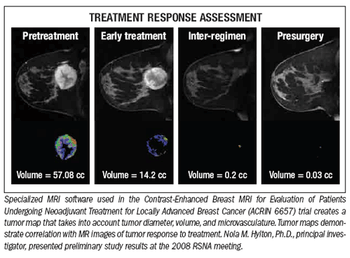
At 1186 pages, much of it in agate (very small) type, the RSNA 2008 program book is a pretty imposing document. Few people or organizations can claim to have reviewed most of it. But the Diagnostic Imaging news team did.

At 1186 pages, much of it in agate (very small) type, the RSNA 2008 program book is a pretty imposing document. Few people or organizations can claim to have reviewed most of it. But the Diagnostic Imaging news team did.

The California Department of PublicHealth has determined that excessiveradiation exposure to a two-year-oldboy who was allegedly subjected to151 CT scans while in the machinefor 65 minutes, leaving him with radiationburns on his face and head, wasdue to “operator error” by the radiologictechnologist.

If it's free, highly relevant to radiology, and on the Internet, you can probably gain access to it through the site www.radiologyeducation.com, thanks to the wife and husband team of Drs. Donna and Michael D'Alessandro.

Radiologists hoped the introduction of isoosmolarcontrast media would eliminatesevere adverse reactions to x-ray contrast.Alas, it was not to be.

Despite data indicating PET can influence the management of cancer patients regardless of their cancer type, National Oncologic PET Registry scientists faced a setback when the Centers for Medicare and Medicaid Services reviewed a request for expanded coverage.

A Taiwanese study suggests multislice CT chest studies should be routinely performed, especially during follow-up exams, for some head and neck cancer patients.

A big drop in exhibitor attendance led to an overall 5% decline in the number ofpeople who attended the 2008 RSNA meeting. Audited totals released by the RSNAafter the end of sessions on Dec. 5 indicate that 58,795 people attended the weeklongscientific assembly and meeting.

Multislice CT coronary angiography is becoming a practical alternative to conventionalangiography.

Radiologists should take much greater care over the patient information contained in their PowerPoint files, according to researchers from the University of Michigan.

Motivated by a $5000 bonus, radiologistsat Massachusetts GeneralHospital completed scan signoffs in afraction of the usual time.

CT colonography can screen for both colorectal cancer and osteoporosis reliably at minimal additional cost and time, according to a study at San Francisco VA Hospital.

Having mastered the basic process of digitizing, storing, and retrieving medical images and reports, radiologists are now turning their attention to analyzing vast collections of the data to uncover clinical and practice trends.


As percutaneous transluminal angioplasty and stent placement replace bypass surgery in the treatment of peripheral arterial disease, cardiologists and surgeons now are performing far more of the procedures than radiologists

Dr. Stephan Miller and colleagues at the University of Tübingen in Germany have discovered that silent myocardial infarction raises the likelihood of a future major cardiac event for 14% of patients with symptomatic peripheral vascular disease evaluated with MRA.

The creators of CT screening colonographyhave not waited for the medicalestablishment and insurers to accept itas an alternative to optical colonoscopy.

Radiation dose reduction was a dominanttheme at the 2008 RSNA scientificassembly.


New York University neuroscientists and economists have combined functional MRI with behavioral economic research to discover why people tend to overbid for products sold at auction: fear of losing a social competition.

Unexpected findings from a study ofNorwegian women who have and have notreceived routine biennial screening mammographysuggest some breast cancers mayspontaneously regress.

"Arrrgh!! Two hours onthis motor vehicle accidentcase with CTs ofthe head, face, chest, abdomen,pelvis, lower extremities, andcervical, thoracic, and lumbarspine for numerous injuries, andnow I find out the patient hasno insurance. He'll be in theICU-studied every day-formonths, and we won't get acent."

The Alliance for Radiation Safety inPediatric Imaging is expanding thescope of its Image Gently campaign.Efforts to protect children from unnecessaryexposure to CT scanningradiation won an endorsement byCareCore National, a radiology benefitsmanagement company that willapply the campaign's guidelines to itsnetwork.

For most of the past 15 years or so, radiologistsjoining the digital revolution havefocused on getting their images into thePACS-and out again, properly annotated witha report. For many today, that's still the primaryfunction of a RIS and PACS.
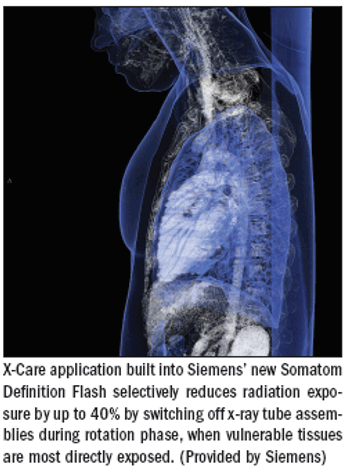
The makers of CT and MR scanners opened the spigot of new introductions at RSNA 2008. They flooded the exhibit floor with products: some premium systems, others optimized to hit particular price points or address clinical niches.

Physicians and insurers have joined forces in Minnesota to create an entry decision-support system that promises to improve the quality of physician referrals for high-tech medical imaging while linking the process to webbased electronic medical records.
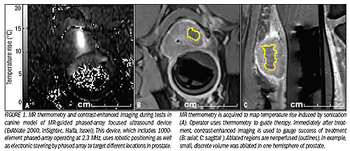
Prostate cancer is a leading cause of cancer death inU.S. men, second only to lung cancer. During2008, an estimated 186,320 new cases of prostatecancer will be diagnosed in the U.S.
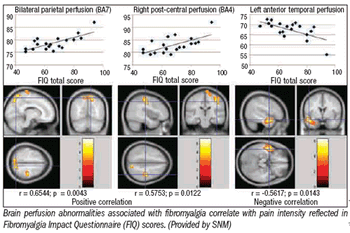
Millions of adults who suffer from chronic pain may no longer need to bear the added burden of wondering if their discomfort originates from a condition called fibromyalgia rather than depression or anxiety.

During 18 years as a radiologic technologist, JeffCrowley acknowledged he sometimes thought,"Oh, I can do that," while assisting withprocedures.
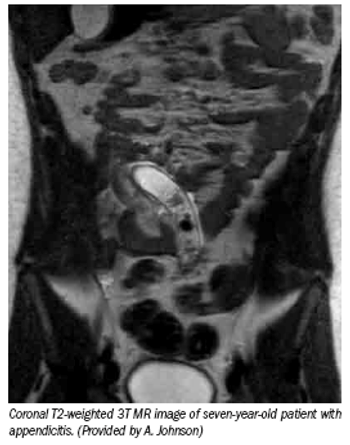
Not long ago, our approach to treating difficultmetastatic tumors was to “spray and pray.” Weknew that chemotherapy and other traditionaltreatment approaches could cause great damageand had a limited chance of successfully destroyingthe entire tumor.
